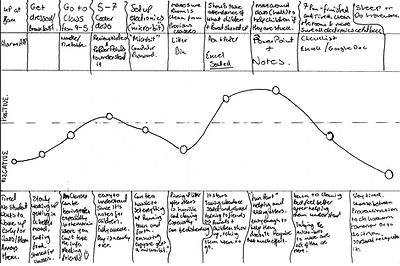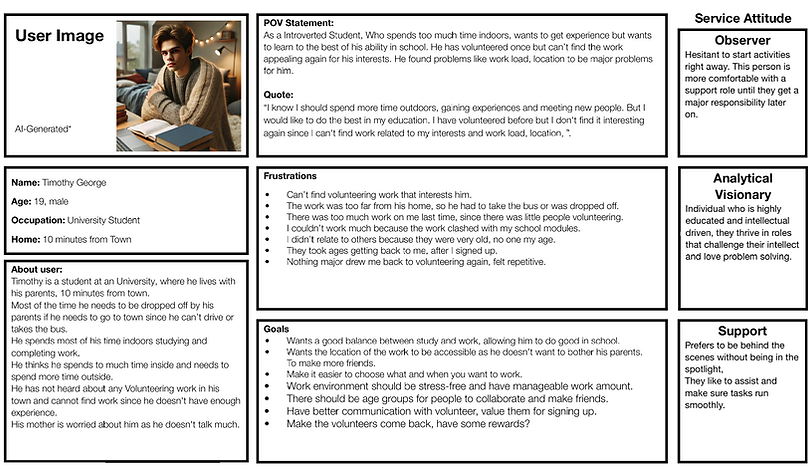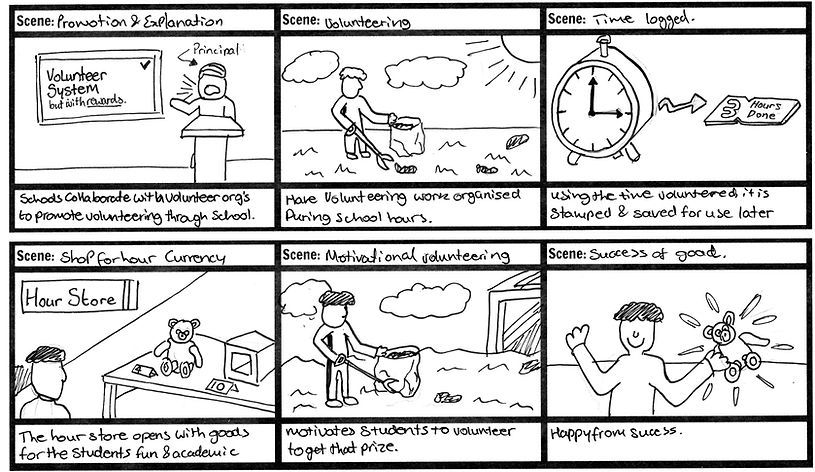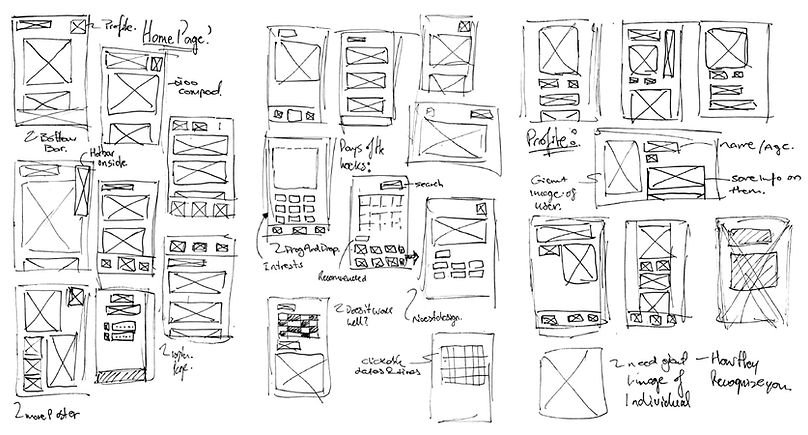top of page
Volunteero
A service that allows for career progression through volunteering for those who don’t have experience.
UX
2 Months
December 2024

The Challenge
The lack of students in the volunteering community, that remain to keep the community thriving.
The Solution
A service platform designed to help students gain valuable experience through volunteering while addressing major barriers such as workload, scheduling, communication, and motivation.
The idea was developed as part of a Service Innovation project at Maynooth University and is backed up by extensive user research, ideation, and iterative design.
Research
Before diving into ideas, I wanted to understand the real reasons why students either stop volunteering or don't start in the first place. There were a lot of assumptions I had at first, like timing and motivation, but I didn't want to design based on my guesses. So I set out to talk to people directly.
Qualitative & Quantitative Data
I conducted 1-on-1 interviews, keeping the questions open-ended so they could speak freely about their experiences.
The Interviewees mentioned the work was at times where they were busy, and the work provided would either be too little or too much depending on the number of individuals volunteering on that day.
"I had enjoyed volunteering, but university and volunteering work clashed"
Student Volunteer, 21
To further back up the interviews, I created a Google Form and shared it around to students aged 18-40.
The online surveys initially were planned to include broad online surveys, but due to the limited number of responses and incomplete answers.
I decided to interview some more students alongside calling my local volunteer centre to provide more actionable insights into user behaviours.

Journey Maps & Empathy Maps
To dive deeper into student behaviours. I also mapped out daily user journeys while using emotional scales alongside creating empathy maps of the users I interviewed. These aided me to view how the students feel across different stages of their day.




I recorded the interviewees' conversations while I interviewed them (with their permission). It saved me from missing key information from the interview.
Findings
Time - Students enjoy volunteering but often find that university workloads and volunteering commitments clash, which leads to reduced participation or drop-out.
Communication – Survey responses highlighted that students want an easier way to sign up, clear communication and more recognition for their contributions.
Motivation – User Journey maps and empathy maps revealed that the emotional highs occurred when students felt valued, while lows were caused by lack of information and poor coordination.
Experience – User interviews and the Volunteer Centre insisted most individuals volunteer to build their CV, gain real-world experience and connect with others.
Persona & POV

Utilising the research findings, I developed a detailed persona representing a typical student volunteer. This persona would help me stay focused on the real user needs throughout the design process, making sure the solutions address their challenges.
Based on the persona, I have produced "how might we?" questions to guide me into the ideation stage. This would allow me to think of solutions without constraints while focusing on the problems at hand.
How might We?

Ideation
To produce ideas from the information gained from the interviews & personas, I started to answer the HMW (How Might We?) Questions.
I decided to break down the questions and ideate!
Feasiblity Bias
During the early ideation phase, I realised I was narrowing my focus by prioritising feasibility over creativity, which in turn limited the range of ideas and potential solutions I could have produced.
Therefore, I pushed myself to explore 'wild' or unconventional solutions, allowing for more innovative and different concepts that could be refined in a later stage for feasibility.
Creative Ideation
This chart showcases the diverse ideas I generated, addressing key issues and topics I identified in volunteering through my research.
By categorising the problems, such as accessibility, motivation, engagement, awareness, flexibility, and health, I was able to ideate solutions with a clear goal in mind.


Feasability & Originality Graph
The feasibility and originality graph helped me evaluate and choose ideas generated from the creative brainstorming.
By plotting each idea on the two-axis chart, one for feasibility and the other for originality, I was able to visually identify where each idea stood in terms of these axes.

This process provides a clear overview of which ideas could be developed, with reasonable resources, maximum impact, & user value.
Gamify Volunteering
Solution One
A solution that allows students to enjoy volunteering, rather than it seem like a chore!
Retaining their attention by creating point systems & leaderboards for game-like competition.
Completed through a service where students can choose the hours they work, see the timetable and view the leaderboard.

Hour Currency
Solution Two
A solution that allows volunteers to utilise the hours of volunteering completed as a currency to buy services or goods.
This creates a goal for students to aim for when volunteering, motivating them.

User Feedback
I presented the idea to a vast amount of student volunteers, where they provided their feedback.
The criticism provided was noted and taken into consideration for the next iterations of the ideas.

Iteration
I carefully addressed every question raised from the user feedback, ensuring no concern was overlooked. This helped me refine the design by directly responding to the users' needs around security, scheduling, motivation, and accessibility.


Gamify Volunteering
Final Solution
An idea that allows students to make a profile online and choose times and work that suits their interests!
Leaderboards provide a sense of competition. Certifications and awards for your CV and LinkedIn that would be backed up by the organisations, giving you experience for future jobs.

Solution Service Blueprint
This solution service blueprint maps out the entire user journey. Starting from the initial sign-up and interest selection to actively volunteering and receiving awards and certifications for the hours worked.
This model ensures a seamless and rewarding experience at every stage.
Further Development
To further develop this concept, I believe an app would make the service 10x better.
The core concept of the service would remain the same but modernised into an app, available to all!
Why?
The app would be easier to utilise and faster to use compared to an online service
Reminders can be set up on your phone with notifications compared to the online service.
The app would be more secure compared to the online service
The app would allow for offline access, for information such as timetables.
The app would allow for more branding and marketing, allowing it to stand out.
Information Architecture & Feature Table
To further develop this idea, I have produced an Information Architecture and a Feature Table.
It highlights the journey taken by the user would be findable and understandable.
Wireframes
These Low-fidelity wireframes outline simple core screens such as the home page, profiles, interests and awards.
I would love to further develop these in the future!

Reflection
This project provided valuable insights into the structure of volunteering and how it can be supported through thoughtful design focused on the users needs and motivations.
The research phase revealed many important problems, such as the scheduling conflicts, communication gaps, and the lack of recognition.
One key learning was the importance of thinking freely at the early ideation stage, which was initially limited by me focusing too much on the feasibility rather than exploring wild ideas.
To aid me in this project, I utilised the feasibility and originality graph to let myself think freely and have a trustable method to finalise an idea.
Moving forward, I would incorporate more user testing to strengthen the design further.
Overall, this experience enhanced my ability to conduct user research, creativity, problem-solving and research methodology, which I can apply in future projects.
bottom of page










